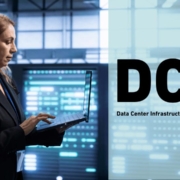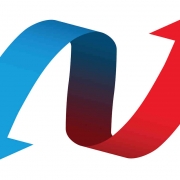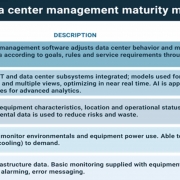US operators scour Inflation Reduction Act for incentives
In the struggle to reduce carbon emissions and increase renewable energy, the US Inflation Reduction Act (IRA), passed in August 2022, is a landmark development. The misleadingly named Act, which is lauded by environmental experts and castigated by foreign leaders, is intended to rapidly accelerate the decarbonization of the world’s largest economy by introducing nearly $400 billion in federal funding over the next 10 years.
Reducing the carbon intensity of electricity production is a major focus of the act and the US clean energy industry will greatly benefit from the tax credits encouraging renewable energy development. But it also includes provisions intended to “re-shore” and create jobs in the US and to ensure that US companies have greater control over the energy supply chain. Abroad, foreign leaders have raised objections over these protectionist provisions creating (or aggravating) a political rift between the US and its allies and trading partners. In response to the IRA, the EU has redirected funds to buoy its low-carbon industries, threatened retaliatory measures and is considering the adoption of similar legislation.
While the politicians argue, stakeholders in the US have been scouring the IRA’s 274 pages for opportunities to capitalize on these lucrative incentives. Organizations that use a lot of electricity are also likely to benefit — including large data centers and their suppliers. Lawyers, accountants and investors working for organizations planning large-scale digital infrastructure investments will see opportunities too. Some of these will be substantial.
Summary of opportunities
For digital infrastructure companies, it may be possible to secure support in the following areas:
- Renewable energy prices / power purchase agreements. Demand for renewable energy and the associated renewable energy credits is likely to be very high in the next decade, so prices are likely to rise. The tax incentives in the IRA will help to bring these prices down for renewable energy generators. By working with electricity providers and possibly co-investing, some data center operators will be able to secure lower energy prices.
- Energy efficiency. Commercial building operators will find it easier to earn tax credits for reducing energy use. However, data centers that have already improved energy efficiency will struggle to reach the 25% reduction required to qualify. Operators may want to reduce energy use on the IT side, but this would not meet the eligibility requirements for this credit.
- Equipment discounts / tax benefits. The act provides incentives for energy storage equipment (batteries or other technologies) which are necessary to operate a carbon-free grid. There are tax concessions for low-carbon energy generation, storage and microgrid equipment. Vendors may also qualify for tax benefits that can be sold.
- Renewable energy generation. Most data centers generate little or no onsite renewable energy. In most cases, the power generated on site can support only a tiny fraction of the IT load. Even so, the many new incentives for equipment and batteries may make this more cost effective; and large operators may find it worthwhile to invest in generation at scale.
Detailed provisions
Any US operator considering significant investments in renewable generation and/or energy storage, including, for example, a UPS — is advised to study the act closely.
Uptime Institute Intelligence’s view is that the following IRA tax credits will apply to operators:
- Investment tax credit (ITC), section 48. Of the available tax credits, the most significant for operators is the ITC. The ITC encourages renewable, low-carbon energy use by reducing capital costs by up to 30% through 2032. It applies to capital spending on assets, including solar, wind, geothermal equipment, electrochemical fuel cells, energy storage and microgrid controllers. The ITC will make investing in solar, wind, energy storage and fuel cells more attractive. The ITC is likely to catalyze investment in, and the deployment of, low carbon energy technologies.
- Energy efficiency commercial buildings deduction, section 179D. This tax credit will encourage investment in energy efficiency and retrofits in commercial buildings. The incentive applies to projects that deliver at least a 25% energy efficiency improvement (reduced from the existing 50% threshold) for a building, compared with ASHRAE’s 90.1 standard reference building. The energy efficiency tax credit applies to projects in the following categories: interior lighting, heating, cooling, ventilation or the building envelope. To meet the 25% threshold, operators can retrofit several building systems. Qualified projects earn a tax credit of between 50 cents and $5 a square foot, depending on efficiency gains and labor requirements.
- Production tax credit (PTC), section 45. This incentive does not directly apply to data center operators but will affect their business if they buy renewable energy. This tax credit rewards low-carbon energy producers by increasing their profit margin. The PTC only applies to energy producers that sell to a third party, rather than consume it directly. Qualifying projects include wind, solar and hydropower facilities. The PTC scales with inflation and lasts for 10 years. In 2022, the maximum value of the PTC was 2.6 cents per kilowatt-hour (kWh) — for reference, the average US industrial energy price in September 2022 was 10 cents per kWh. If the credit is fully passed on to consumers, energy costs will be reduced by about 25%. (Note: eligible projects must choose between the PTC and the ITC.)
For the tax credits mentioned above, organizations must meet the prevailing wage and apprenticeship requirements (initial guidance by the US Treasury Department and the Internal Revenue Service can be found here) to receive the maximum credit unless the nameplate generation capacity of the project is less than 1 megawatt for the ITC and PTC.
The incentives listed above will be available until 2032 creating certainty for operators considering an investment in renewables, efficiency retrofits or the renewable energy industry. Additionally, these tax credits are transferable: they can be sold — for cash — to another company with tax liability, such as a bank.
Hyperscalers and large colocation providers are best positioned to capitalize on these tax credits: they are building new capacity quickly, possess the expertise and staffing capacity to navigate the legal requirements, and have ambitious net-zero targets.
However, data center operators of all sizes will pursue these incentives where there is a compelling business case. Owners / operators from Uptime Institute’s 2022 global data center survey said more renewable energy purchasing options would deliver the most significant gains in sustainability performance in the next three to five years.
The IRA may also lower the cost barriers for innovative data center designs and typologies. For example, IRA incentives will strengthen the business case for pairing a facility on a microgrid with renewable and long-duration energy storage (LDES). Emerging battery chemistries in development (including iron-air, liquid metal and nickel-zinc) offer discharge durations of 10 hours to 10 days and would benefit from large deployments to prove their viability.
LDES is essential for a reliable low-carbon grid. As the IRA speeds up the deployment of renewables, organizations will need multi-day energy storage to smooth out the high variability of intermittent generators such as solar and wind. Data center facilities may be ideal sites for LDES, even if they are not dedicated for data center use.
Additionally, low-carbon baseload generators such as nuclear, hydrogen and geothermal — all eligible for IRA tax credits — will be needed to replace reliable fossil fuel generators, such as gas turbines and coal power plants.
The incentives in the IRA, welcomed with enthusiasm by climate campaigners the world over, will strengthen the business case in the US for reducing energy consumption, deploying low-carbon energy and energy storage, and/or investing in the clean energy economy.
There is, however, a more problematic side: the rare earth materials and critical components the US will need to meet the objectives of the IRA may be hard to source in sufficient quantities and allegations of protectionism may cause political rifts with other countries.
Lenny Simon, Senior Research Associate lsimon@uptimeinstitute.com
Andy Lawrence, Executive Director of Research alawrence@uptimeinstitute.com




 2019
2019





